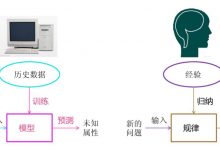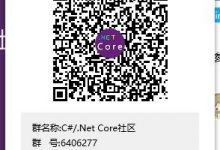前言
TensorFlow 是一个开源的、基于 Python 的机器学习框架,它由 Google 开发,并在图形分类、音频处理、推荐系统和自然语言处理等场景下有着丰富的应用,是目前最热门的机器学习框架。
除了 Python,TensorFlow 也提供了 C/C++、Java、Go、R 等其它编程语言的接口。
TensorFlow 还有更多的特点,如下:
- 支持所有流行语言,如 Python、C++、Java、R和Go。
- 可以在多种平台上工作,甚至是移动平台和分布式平台。
- 它受到所有云服务(AWS、Google和Azure)的支持。
- Keras——高级神经网络 API,已经与 TensorFlow 整合。
- 与 Torch/Theano 比较,TensorFlow 拥有更好的计算图表可视化。
- 允许模型部署到工业生产中,并且容易使用。
- 有非常好的社区支持。
- TensorFlow 不仅仅是一个软件库,它是一套包括 TensorFlow,TensorBoard 和 TensorServing 的软件。
环境准备
安装Tensorflow
pip install tensorflow

第一个示例
import tensorflow as tf# 载入并准备好 MNIST 数据集。将样本从整数转换为浮点数:mnist = tf.keras.datasets.mnist(x_train, y_train),(x_test, y_test) = mnist.load_data()x_train, x_test = x_train / 255.0, x_test / 255.0# 将模型的各层堆叠起来,以搭建 tf.keras.Sequential 模型。model = tf.keras.models.Sequential([tf.keras.layers.Flatten(input_shape=(28,28)),tf.keras.layers.Dense(128, activation=\'relu\'),tf.keras.layers.Dropout(0.2),tf.keras.layers.Dense(10, activation=\'softmax\')])# 为训练选择优化器和损失函数model.compile(optimizer=\'adam\',loss=\'sparse_categorical_crossentropy\',metrics=[\'accuracy\'])# 训练并验证模型:model.fit(x_train, y_train, epochs=5)model.evaluate(x_test, y_test, verbose=2)
现在,这个照片分类器的准确度已经达到 98%。
实例进阶
本指南将训练一个神经网络模型,对运动鞋和衬衫等服装图像进行分类。即使您不理解所有细节也没关系;这只是对完整 TensorFlow 程序的快速概述,详细内容会在您实际操作的同时进行介绍。
import tensorflow as tffrom tensorflow import kerasimport numpy as npimport matplotlib.pyplot as pltprint(tf.__version__)
导入数据包
该数据集包含 10 个类别的 70,000 个灰度图像。这些图像以低分辨率(28×28 像素)展示了单件衣物,如下所示:
fashion_mnist = keras.datasets.fashion_mnist(train_images, train_labels),(test_images, test_labels) = fashion_mnist.load_data()

加载数据集会返回四个 NumPy 数组:
train_images 和 train_labels 数组是训练集,即模型用于学习的数据。
测试集、test_images 和 test_labels 数组会被ad8用来对模型进行测试。
图像是 28×28 的 NumPy 数组,像素值介于 0 到 255 之间。标签是整数数组,介于 0 到 9 之间。这些标签对应于图像所代表的服装类:
| 标签 | 类 |
|---|---|
| 0 | T恤/上衣 |
| 1 | 裤子 |
| 2 | 套头衫 |
| 3 | 连衣裙 |
| 4 | 外套 |
| 5 | 凉鞋 |
| 6 | 衬衫 |
| 7 | 运动鞋 |
| 8 | 包 |
| 9 | 短靴 |
每个图像都会被映射到一个标签。由于数据集不包括类名称,请将它们存储在下方,供稍后绘制图像时使用:
class_names = [\'T-shirt/top\', \'Trouser\', \'Pullover\', \'Dress\', \'Coat\',\'Sandal\', \'Shirt\', \'Sneaker\', \'Bag\', \'Ankle boot\']
预处理数据
在训练网络之前,必须对数据进行预处理。如果您检查训练集中的第一个图像,您会看到像素值处于 0 到 255 之间:
plt.figure()plt.imshow(train_images[0])plt.colorbar()plt.grid(False)plt.show()

将这些值缩小至 0 到 1 之间,然后将其馈送到神经网络模型。为此,请将这些值除以 255。请务必以相同的方式对训练集和测试集进行预处理:
train_images = train_images / 255.0test_images = test_images / 255.0
为了验证数据的格式是否正确,以及您是否已准备好构建和训练网络,让我们显示训练集中的前 25 个图像,并在每个图像下方显示类名称。
plt.figure(figsize=(10,10))for i in range(25):plt.subplot(5,5,i+1)plt.xticks([])plt.yticks([])plt.grid(False)plt.imshow(train_images[i], cmap=plt.cm.binary)plt.xlabel(class_names[train_labels[i]])plt.show()

构建模型
构建神经网络需要先配置模型的层,然后再编译模型
设置层
神经网络的基本组成部分是层。层会从向其馈送的数据中提取表示形式。希望这些表示形式有助于解决手头上的问题。
大多数深度学习都包括将简单的层链接在一起。大多数层(如 tf.keras.layers.Dense)都具有在训练期间才会学2080习的参数。
model = keras.Sequential([keras.layers.Flatten(input_shape=(28, 28)),keras.layers.Dense(128, activation=\'relu\'),keras.layers.Dense(10)])
该网络的第一层 tf.keras.layers.Flatten 将图像格式从二维数组(28 x 28 像素)转换成一维数组(28 x 28 = 784 像素)。将该层视为图像中未堆叠的像素行并将其排列起来。该层没有要学习的参数,它只会重新格式化数据。
展平像素后,网络会包括两个 tf.keras.layers.Dense 层的序列。它们是密集连接或全连接神经层。第一个 Dense 层有 128 个节点(或神经元)。第二个(也是最后一个)层会返回一个长度为 10 的 logits 数组。每个节点都包含一个得分,用来表示当前图像属于 10 个类中的哪一类。
编译模型
在准备对模型进行训练之前,还需要再对其进行一些设置。以下内容是在模型的编译步骤中添加的:
损失函数 – 用于测量模型在训练期间的准确率。您会希望最小化此函数,以便将模型“引导”到正确的方向上。
优化器 – 决定模型如何根据其看到的数据和自身的损失函数进行更新。
指标 – 用于监控训练和测试步骤。以下示例使用了准确率,即被正确分类的图像的比率。
model.compile(optimizer=\'adam\',loss=tf.keras.losses.SparseCategoricalCrossentropy(from_logits=True),metrics=[\'accuracy\'])
训练模型
训练神经网络模型需要执行以下步骤:
- 将训练数据馈送给模型。在本例中,训练数据位于 train_images 和 train_labels 数组中。
- 模型学习将图像和标签关联起来。
- 要求模型对测试集(在本例中为 test_images 数组)进行预测。
- 验证预测是否与 test_labels 数组中的标签相匹配。
向模型反馈数据
model.fit(train_images, train_labels, epochs=10)

在模型训练期间,会显示损失和准确率指标。此模型在训练数据上的准确率达到了 0.91(或 91%)左右。
准确率评估
test_loss, test_acc = model.evaluate(test_images, test_labels, verbose=2)print(\'\\nTest accuracy:\', test_acc)

结果表明,模型在测试数据集上的准确率略低于训练数据集
进行预测
probability_model = tf.keras.Sequential([model,tf.keras.layers.Softmax()])predictions = probability_model.predict(test_images)print(predictions[0])print(np.argmax(predictions[0]))
在上例中,模型预测了测试集中每个图像的标签。我们来看看第一个预测结果:
因此,该模型非常确信这个图像是短靴,或 class_names[9]。
您可以将其绘制成图表,看看模型对于全部 10 个类的预测。
def plot_image(i, predictions_array, true_label, img):predictions_array, true_label, img = predictions_array, true_label[i], img[i]plt.grid(False)plt.xticks([])plt.yticks([])plt.imshow(img, cmap=plt.cm.binary)predicted_label = np.argmax(predictions_array)if predicted_label == true_label:color = \'blue\'else:color = \'red\'plt.xlabel(\"{} {:2.0f}% ({})\".format(class_names[predicted_label],100*np.max(predictions_array),class_names[true_label]),color=color)def plot_value_array(i, predictions_array, true_label):predictions_array, true_label = predictions_array, true_label[i]plt.grid(False)plt.xticks(range(10))plt.yticks([])thisplot = plt.bar(range(10), predictions_array, color=\"#777777\")plt.ylim([0, 1])predicted_label = np.argmax(predictions_array)thisplot[predicted_label].set_color(\'red\')thisplot[true_label].set_color(\'blue\')
验证预测结果
我们来看看第 0 个图像、预测结果和预测数组。正确的预测标签为蓝色,错误的预测标签为红色。数字表示预测标签的百分比(总计为 100)。
i = 0plt.figure(figsize=(6,3))plt.subplot(1,2,1)plot_image(i, predictions[i], test_labels, test_images)plt.subplot(1,2,2)plot_value_array(i, predictions[i], test_labels)plt.show()

让我们用模型的预测绘制几张图像。请注意,即使置信度很高,模型也可能出错。
num_rows = 5num_cols = 3num_images = num_rows*num_colsplt.figure(figsize=(2*2*num_cols, 2*num_rows))for i in range(num_images):plt.subplot(num_rows, 2*num_cols, 2*i+1)plot_image(i, predictions[i], test_labels, test_images)plt.subplot(num_rows, 2*num_cols, 2*i+2)plot_value_array(i, predictions[i], test_labels)plt.tight_layout()plt.show()

训练好模型进行判断
img = test_images[1]img = (np.expand_dims(img,0))predictions_single = probability_model.predict(img)print(predictions_single)plot_value_array(1, predictions_single[0], test_labels)_ = plt.xticks(range(10), class_names, rotation=45)print(np.argmax(predictions_single[0]))
判断出这个图片的标签是2,通过上面的对照表对应生成套头衫。
建议大家使用jupyter notebook来运行上面的代码查看效果更佳。
 爱站程序员基地
爱站程序员基地
![[翻译] Backpressure explained — the resisted flow of data through software-爱站程序员基地](https://aiznh.com/wp-content/uploads/2021/05/6-220x150.jpeg)

